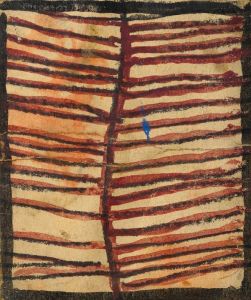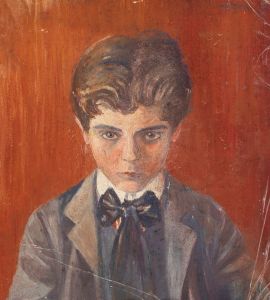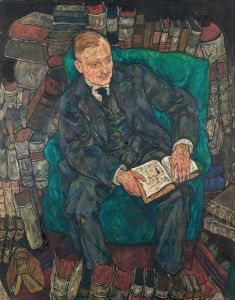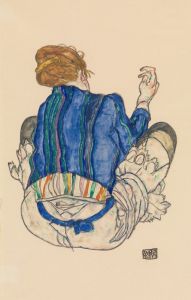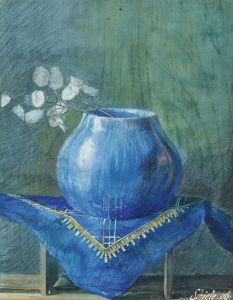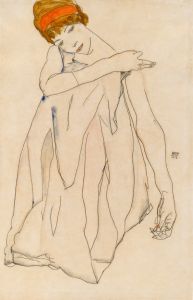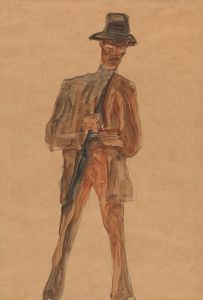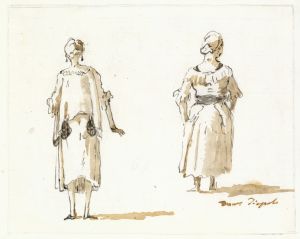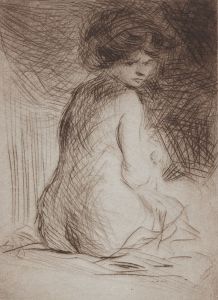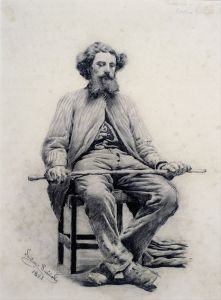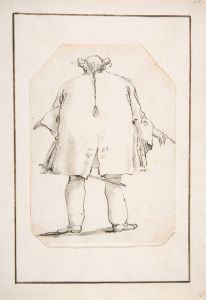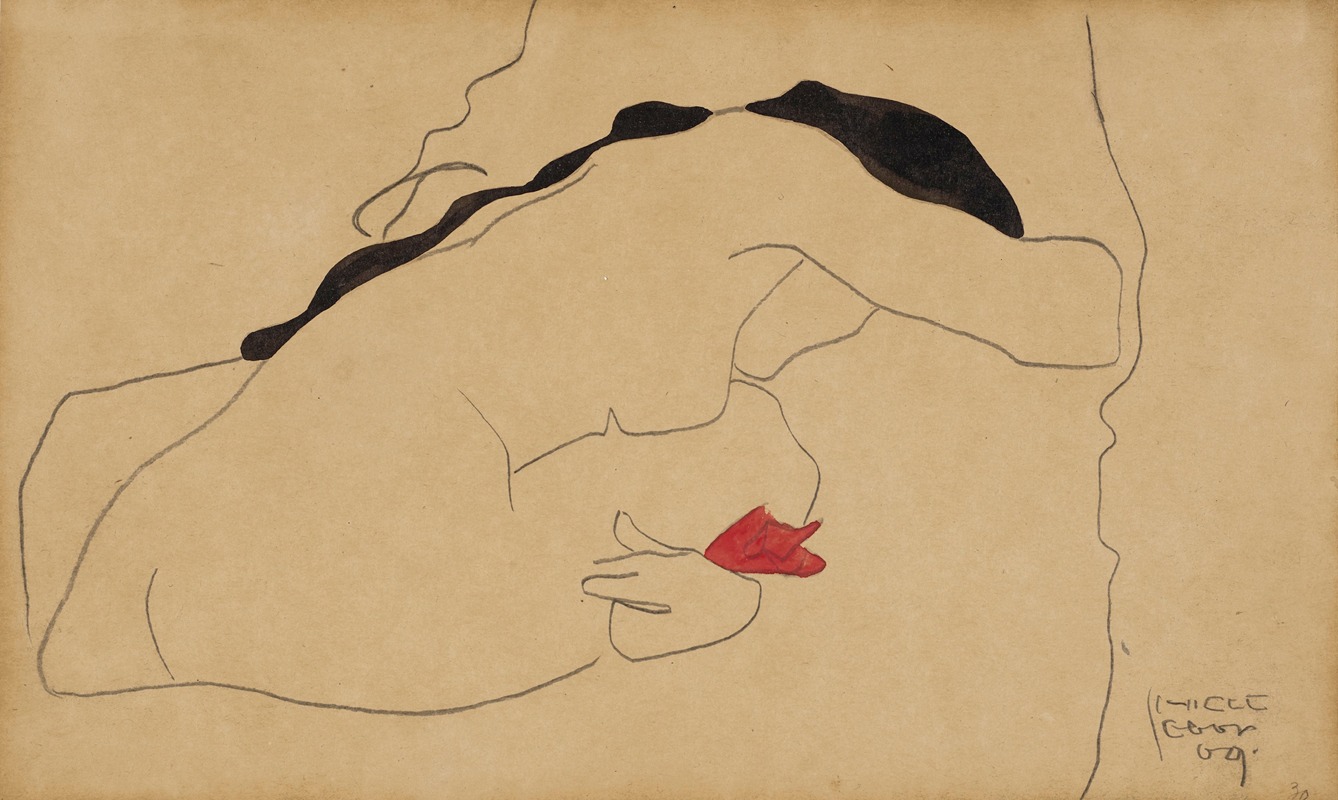
Gebeugt sitzender weiblicher Rückenakt mit schwarzem Haar
A hand-painted replica of Egon Schiele’s masterpiece Gebeugt sitzender weiblicher Rückenakt mit schwarzem Haar, meticulously crafted by professional artists to capture the true essence of the original. Each piece is created with museum-quality canvas and rare mineral pigments, carefully painted by experienced artists with delicate brushstrokes and rich, layered colors to perfectly recreate the texture of the original artwork. Unlike machine-printed reproductions, this hand-painted version brings the painting to life, infused with the artist’s emotions and skill in every stroke. Whether for personal collection or home decoration, it instantly elevates the artistic atmosphere of any space.
Egon Schiele, an Austrian painter known for his distinctive style and provocative subject matter, created the artwork titled "Gebeugt sitzender weiblicher Rückenakt mit schwarzem Haar" (Bent Seated Female Nude with Black Hair) in 1913. Schiele was a protégé of Gustav Klimt and a major figure in the early 20th-century Viennese art scene. His work is characterized by its intensity, raw emotion, and exploration of the human form, often focusing on themes of sexuality and existential angst.
This particular piece is a fine example of Schiele's approach to the human figure. The painting depicts a female nude seated with her back turned to the viewer, her body bent forward. The focus on the back and the curve of the spine highlights Schiele's interest in the human anatomy and his ability to convey emotion and tension through posture and form. The woman's black hair contrasts starkly with her pale skin, drawing attention to the contours of her body and the expressive lines that define her form.
Schiele's technique in this work, as in many of his other pieces, involves a combination of bold lines and a muted color palette. He often used gouache, watercolor, and pencil to achieve a sense of immediacy and intimacy. The use of line in "Gebeugt sitzender weiblicher Rückenakt mit schwarzem Haar" is particularly striking, as it emphasizes the tension in the woman's pose and the starkness of her isolation.
The context of Schiele's work is essential to understanding its impact. During the time he created this piece, Vienna was a hub of intellectual and artistic activity, with figures like Sigmund Freud exploring the depths of the human psyche. Schiele's art reflects this cultural milieu, delving into themes of identity, sexuality, and the human condition. His work was often controversial, pushing the boundaries of what was considered acceptable in art at the time. This led to both acclaim and criticism, with some viewing his work as groundbreaking and others as scandalous.
Schiele's personal life also influenced his art. He had a tumultuous career, marked by personal struggles and a brief imprisonment in 1912 for charges related to his use of underage models, though he was ultimately acquitted of the more serious charges. These experiences, along with the broader socio-political changes occurring in Europe at the time, informed his perspective and artistic output.
"Gebeugt sitzender weiblicher Rückenakt mit schwarzem Haar" is a testament to Schiele's ability to capture the complexity of the human experience. The painting's focus on the back of the figure, rather than the face, invites viewers to consider the subject's inner world and emotional state. This approach is typical of Schiele's work, which often eschews traditional representations of beauty in favor of more honest and sometimes unsettling depictions of his subjects.
Today, Egon Schiele is recognized as a pivotal figure in modern art, and his works are celebrated for their emotional depth and innovative style. "Gebeugt sitzender weiblicher Rückenakt mit schwarzem Haar" remains an important piece within his oeuvre, exemplifying his unique approach to the human form and his enduring influence on the art world.





